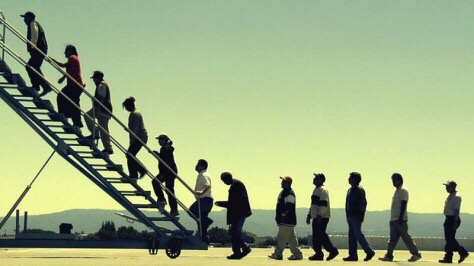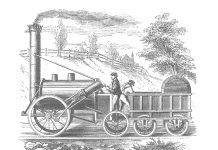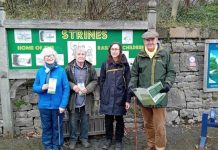A NEW exhibition at Manchester School of Art’s Holden Gallery will explore work that make time slow or stop to capture unexpected moments.
The idea that there is an ever-quickening pace to contemporary life has become a compelling condition. The feeling of being in the midst of an ever-present flow of information and activity, of never quite having enough time, is something of a consistent feature from the nineteenth century through to now. It is a constant to such an extent that whenever the word ‘speed’ is mentioned there is an implicit suggestion that it tends to mean quick or fast.
To be slow could be seen in negative terms, something to be easily overlooked or disregarded completely. Yet sometimes we just need to create the space to look. The exhibition brings together a group of works which make things slow down or stop. This could be the subject of the work; things coming to a temporary stop to capture an unexpected moment. It could relate to the process of looking; where duration is stretched beyond reason.
Alternatively, the depiction of boredom where a short space of time can seem like an eternity. There is also the political dimension of what it means to be stopped and restricted from movement, to be brought to a standstill at a border or checkpoint. The exhibition does not aim to mark the slow and the static as qualities that should be sought out, only that in these moments, there is an opportunity to look at things a little more closely.
The three works by Hannah Starkey set a voyeur like gaze on three different women in contrasting environments. By utilising staged characters and settings, Starkey creates narratives that suggest familiar situations. The women in Starkey’s photographs are often engaged in routine daily activities, but are then caught in a moment of contemplation and detachment, briefly separated from everything that surrounds them.
In Hans Op de Beeck’s Coffee, an elderly couple are sat at a table in a café, yet there is no engagement between them, both staring fixedly into space, looking ill at ease and waiting for time to pass. For the viewer, time seems to pass even more slowly due to the awkward nature of the situation. In Situation (1), a camera slowly moves along a seemingly endless row of tills in an empty supermarket. The cashiers are waiting patiently for the doors to open and the familiar and lively ambience of the supermarket day to begin.
In Oil Workers (from the Shell company of Nigeria) returning home from work, caught in torrential rain, David Claerbout explores the boundaries between still and moving image, as well as time and perception. With the use of 3D computer technology, Claerbout reconstructs a photograph found on the Internet. The film shows a group of men in Nigeria taking refuge under a bridge during a heavy rainstorm, waiting for the rain to ease. As the workers wait for the rain to stop, the viewer waits for the full narrative of the film to be revealed. This allows time to reflect on the key resources of oil and water, notions of scarcity and value, and the conflicting wealth for some and exploitation for others.
The theme of migration is present in both Adrian Paci’s work and personal biography; in 1997 he left his native Albania, which was in a state of unrest, to settle in Milan. The film Centro di Permanenza Temporanea is set on the runway at an airport in San Josè. The title of the film is the Italian name for a refugee camp or detention centre. The name also references the contradictory state of ‘permanent temporariness’ in which many refugees and migrants find themselves. In the film, a group of people are seen mounting an aircraft stairway, but as the camera pans out, it is clear there is no plane and the passengers are stranded, in a static queue. The sense of uncertainty, waiting and stillness is prevalent, and as such offers a reflection on migration and border tensions.
Artist duo João Maria Gusmão and Pedro Paiva often produce poetic-philosophical narratives of everyday situations, scenes that are suspended between reality and artifice. Their photographs examine our relationship to reality; a handful of spaghetti flying, a stuffed leopard motionless in a washing machine. The artists approach a seemingly objective view of everyday situations and introduce the inexplicable into familiar reality. Some of the film works are shot in high-speed before being projected in slow motion, exposing ordinarily unnoticeable detail. Sleeping in a bullet train shows people resting in one of the fastest commuter trains in the world in Japan. The drowsing minds of passengers are paradoxically framed against the intense potential velocity of the speeding train.
Listing information
Exhibition Title: From Slow to Stop
Public Preview: Friday 21st October, 17:30 – 19:30
Exhibition Dates: 24th October – 16th December
Venue: Holden Gallery, Grosvenor Building, Manchester School of Art, Cavendish Street, M15 6BR







